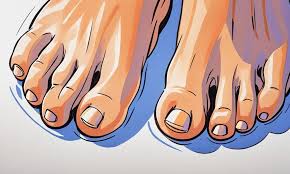In the 21st century, wearable devices and apps are becoming more and more commonplace. You might be wearing a fitness tracker right now or have a smartphone with a fitness app. But what exactly are these devices and apps? In this blog post, we will explore the basics of wearable devices and apps. We will discuss how they work, their benefits and drawbacks, and some of the different types available on the market. By the end of this post, you should have a better understanding of what these devices are and how to use them effectively.
What is a wearable device?
A wearable device is a small, usually portable, electronic device that is worn on the body. They are often connected to other devices, such as smartphones, and can perform various tasks, such as monitoring fitness data or playing music. Some common examples of wearable devices include smartwatches, fitness trackers, and virtual reality headsets.
How do wearable devices work?
Wearable devices are powered by a number of different technologies, including sensors, microprocessors, and wireless communication. Sensors are used to detect and track movement, while microprocessors process this information and convert it into useful data. Wireless communication allows wearable devices to transmit this data to other devices, such as smartphones or computers.
One of the most important aspects of any wearable device is its power source. Most wearables rely on batteries to keep them running, although some devices may also use alternative power sources, such as solar panels. It’s important to choose a power source that will be able to keep the device running for as long as possible without needing to be replaced or recharged too frequently.
Another important consideration for wearable devices is their form factor. Wearables come in a variety of different shapes and sizes, from fitness trackers that can be worn on the wrist to smartwatches that resemble traditional watches. Some wearables are even designed to be worn as jewelry or clothing. The form factor of a device should be chosen based on its intended use; for example, a fitness tracker might be more comfortable to wear on the wrist than a smartwatch.
Finally, it’s important to choose a wearable device that works with your existing technology ecosystem. If you have a smartphone with Android™ OS, you’ll want to choose a device that is compatible with Android Wear™ OS. And if you have an iPhone®, you’ll
What are the benefits of using a wearable device?
There are a number of benefits to using a wearable device. Perhaps the most obvious is that they can help you to stay connected with your loved ones and friends. You can also use them to monitor your fitness and activity levels, as well as keep track of your location. In addition, many wearable devices now come with built-in apps that can provide you with a range of different features and functions.
What are the different types of wearable devices?
There are three primary types of wearable devices: smartwatches, fitness trackers, and smart glasses. Smartwatches are the most popular type of wearable device and can perform many of the same functions as a smartphone, including making calls, sending texts, and running apps. Fitness trackers are designed to track your fitness data, such as steps taken, calories burned, and active minutes. Smart glasses are a newer type of wearable device that provides a hands-free experience for tasks such as taking pictures, recording videos, and getting directions.
What are some popular wearable devices?
There are many different types of wearable devices available on the market, and their popularity is constantly increasing. Some of the most popular types of wearable devices include fitness trackers, smartwatches, and virtual reality headsets.
Fitness trackers are designed to help you keep track of your physical activity and monitor your progress over time. They usually come equipped with features such as a heart rate monitor, step tracker, and calorie counter.
Smartwatches are essentially miniature computers that you can wear on your wrist. They offer a variety of features such as the ability to make phone calls, send texts, and access the internet. Many smartwatches also come with fitness-tracking capabilities.
Virtual reality headsets are becoming increasingly popular as they offer a completely immersive experience. With a VR headset, you can explore virtual worlds, play games, and even watch movies.
How to choose the right wearable device for you
There are many factors to consider when choosing a wearable device. The first is what you want to use the device for. There are devices that track fitness, monitor heart rate and blood pressure, and even provide medical information. Choose the device that best fits your needs.
The second factor to consider is your budget. Wearable devices can range in price from a few hundred dollars to a few thousand dollars. Choose the device that fits your budget and meets your needs.
The third factor to consider is compatibility. Make sure the device you choose is compatible with your smartphone or tablet. Most devices use Bluetooth to connect to your phone, but some require special adapters or cables.
The fourth factor to consider is battery life. Some devices need to be charged every day, while others can last for weeks on a single charge. Choose the device that best fits your needs in terms of battery life.
Finally, consider reviews before making your purchase. There are many websites and forums where you can read reviews from other users. This can help you make an informed decision about which device is right for you.
Conclusion
Wearable devices and apps are becoming increasingly popular these days. They offer a convenient and efficient way to monitor our health, fitness, and even sleep patterns. With so many options available in the market, it can be difficult to know which one is right for us. In this article, we have provided some basic information about the most popular wearable devices and apps to help you make an informed decision.








You need help to Grow In Google Search and Drive More Traffic and Get You More Customers For abhint.com
We Offer Quality SEO Services You Can Trust.
We even offer Free Trial just to prove to you that our services work with Risk-Free.
>> https://zeep.ly/c4Fgr
Thanks,
McKinlay
Belgium, WLG, Bellaire, 4610, Eikstraat 136
To stop any further communication through your website form, Please reply with subject: Unsubscribe my abhint.com
Do you mean you will help me free of cost?